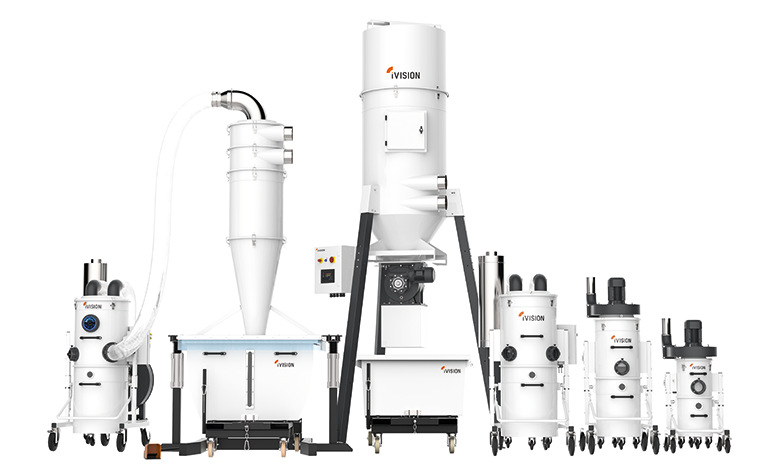The woodworking industry has always been a dangerous place to work. Most people attribute that to the number of accidents and the nature of the equipment that we work with. After all, the industry is second only to farming in terms of accident rates.
Historically, emphasis has always been put on addressing the most obvious dangers in woodworking, but did you know that there’s another extremely dangerous aspect of woodworking that often goes unnoticed? In fact, it can actually lead to occupational asthma, lung disease, and even cancer.
Each year, around 12,000 people die from work-related lung diseases linked to past exposure to hazardous substances at work. That includes dust exposure.
But the problem isn’t being resolved. In fact, it’s getting worse.
Back in February 2022, HSE (Health and Safety Executive) released a report that showed over 50% of the 200 woodworking businesses they visited in the last two quarters were breaching dust exposure regulations.
We know that dust exposure doesn’t sound too threatening on the surface, but there is a major lack of understanding when it comes to dust extraction and how to make it efficient and safe.
We need to make a change
Alex Dalton, director at Daltons Wadkin, explains how his personal experience in the industry led him to believe that businesses weren’t taking dust exposure seriously.
He said: “We’ve suspected for a long time that the LEV (Local Exhaust Ventilation) side of workshops could be improved generally throughout the UK. From my own experience as a salesperson in the early part of my career, going into different businesses to talk about different machine solutions, it would not be uncommon to walk in and see piles of wood chippings and high dust accumulations on work surfaces and window sills
“Without making any excuses, it’s the way the industry has been for a long time. It’s very traditional - the methods followed now were also followed years ago. There’s been a real lack of progression given the modern data and findings we now have access to,” says Alex.
What does dust exposure actually do?
Wood-dust inhalation is included in the figure of 12,000 people dying yearly from work-related lung diseases. It’s not uncommon for inhalation to cause occupational asthma and in the case of hardwoods, sinonasal cancer.
It’s clear that these deaths are absolutely preventable, but it will take businesses putting in the effort to ensure that any exposure is effectively controlled.

Why has dust exposure become such a prominent issue?
Employers working with woodworking equipment know that they have to have their LEV systems checked every 14 months, but with deaths and safety breaches becoming more common, it has led the industry to wonder whether regulations are truly being followed.
These machines are often in large workshops, and they may just be sitting in a corner of the room. Even if they’re tucked away, it doesn’t stop how quickly they can distribute dust around the whole working area. Even if you are working in another area of the workshop, you are still exposed to that dust regularly.
Alex explained in more detail how uncared-for machines can cause issues: “A lot of systems are designed and installed to service a certain number of machines but over time workshops evolve, equipment is added dust extraction systems modified in-house along the way. When that happens you can lose efficiency very quickly and expose workers to excessive amounts of dust in the workplace. It’s a slippery slope.”
“Depending on the type of material that is being cut and the type of machine being used, it can be extremely obvious that large volumes of dust are being created, but in other situations, it isn’t quite so obvious. Regardless, it is still there, still airborne, still present and workers are breathing it in all day,” says Alex.
How can you protect yourself and your employees?
It’s a law that all woodworking machinery should be LEV tested at least every 14 months, but Daltons Wadkin recommends that LEV systems should be tested every year.
“We have a growing number of service engineers who are trained LEV testing engineers with all the equipment and qualifications that are required,” says Alex.
“Our P601 qualified engineers come out for routine LEV testing for our customers when required and that can be incorporated into general machine maintenance plans too, so we know that all of our customers get the most efficient and safe service possible.
“We also offer a range of dust extraction solutions. To serve individual machines we offer Ivision units; special high-pressure systems from an Italian-based manufacturer that specialises in dealing with all different types of airborne contaminants or material wastage generated from cutting - not just woodworking dust, but also plastics, composites and metal. They offer a wide range of solutions to work with machines that we sell.
“Beyond that, we will always encourage customers to opt for a fully integrated LEV system. These are stand-alone, purpose-designed, extraction systems with externally located collection bins complete with purpose-built ducting and manifolds to suit each machine. Flow rate gauges can also be installed at each machine to give operators a quick visual indication of whether the system is working optimally.
It’s time to solve the problem
“The solutions are clear, but if the whole industry doesn’t make active improvements to deal with dust exposure and extraction, then the problem will only get worse,” says Alex.
“Looking after the health and well-being of our employees is extremely important to us, and we want to help other businesses in every way we can to make sure we stop dust exposure from being a premature cause of health issues.”
To find out more about how Daltons Wadkin can help with dust exposure contact Alex and the team on 0115 986 5201, email [email protected] or visit www.daltonswadkin.com









